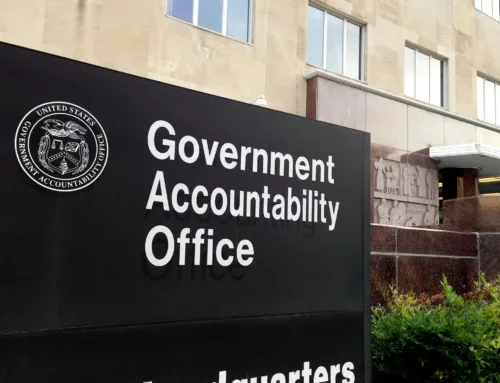When the end of the fiscal year approaches and, unfortunately, the Congress hasn’t done its job of passing the spending bills necessary to keep the federal government operating, a Continuing Resolution (CR) is necessary to avoid a government shutdown.
We just wrote our Weekly Wastebasket on why CRs are a terrible way to run the government. If you missed it prior to Labor Day weekend, we’ll wait while you read it now.
…
Back? Okay.
This “Our Take” points out that, in fact, it is almost impossible to operate something as complicated as the U.S. Government by funding everything exactly as it was the year before. Trying to do that is known as a “clean CR” in Congressional parlance. Such bills, intended to literally keep the lights on, are usually for short periods of time, often less than a week while inter-governmental jockeying hammers out the details of all the remaining spending bills that have not passed. But the talk around Washington is that the CR being contemplated for the beginning of Fiscal Year 2023 (FY23) will last at least through mid-December.
When long CRs occur, each federal agency is asked to provide the Office of Management and Budget (OMB) with a list of so-called “anomalies”. These are exceptions to the “just like last year” constraints of a CR. And the list released by OMB last week is a whopper – fifty pages of “Mother May I?” covering at least 23 different federal agencies we could identify by reading the dreary details so you don’t have to.
Many of these anomalies show the impracticality of a clean CR. For example, the Department of Agriculture (USDA) wants to insert language specifying that language from the FY22 rescinding unspent funds in the Buildings and Facilities account does not apply during the CR. That’s because last year they weren’t ready to award a grant for modernizing some USDA facilities, but now they are, they just may not get to awarding the grant until October. But if the rescission is carried over, they’ll have no funds to award.
There are also a whole host of loan or loan guarantee programs needing extended authority. USDA’s Rural Microentrepreneur Assistance Program (which does both loans and grants) can’t function unchanged this year. That’s because last year it had a negative subsidy rate (fees paid by participants in the loan guarantee portion actually exceeded obligations), but this year a ramped up program will cost taxpayers. Small Business Administration loans and programs directed at Native American Housing are in the same boat. And while it’s not directly related to the Biden Administration’s forgiveness of student loans, the Department of Education needs an anomaly allowing it to run the federal student loan program. Without an anomaly there would be major delays in people applying for student aid, processing of applications, and even call centers that are staffed to walk people through the application form.
Also of concern are a number of programs aimed at addressing unforeseen events. FEMA’s Emergency Food and Shelter Program needs an anomaly to address the influx of migrants on the Southwestern Border. There is an anomaly to continue the Bureau of Reclamation’s Drought Response Program activities including drought emergency response and to provide WaterSMART grants in the arid West.
In the area of national security, the Pentagon is asking to transfer unobligated balances (unspent funds) from its humanitarian aid account to the Department of State to spend on “Operation Allies Welcome” to resettle Afghan refugees. In other issues related to our departure from Afghanistan, the Pentagon asks to transfer $100 million from the Afghan Security Forces Fund to pay outstanding invoices to contractors that weren’t paid on our rush for the exits. If this request isn’t granted, the bills may need to be paid from the “Judgment Fund”, presumably if the contractors sue for payment.
The Navy and Air Force, along with their Reserve components, need authority to increase the rate of spending on military operations and training, largely due to increased fuel costs.
The Pentagon also asks for the authority to extend “protection and personal security” to former or retired Defense officials. These folks usually receive continued security support for two years. By granting this anomaly, that would stretch to three years. This anomaly is vaguely written but seems to be directed at specific former officials – not a blanket extension.
The Departments of Air Force, Army, and Navy are asking for both an increased obligation rate and, except for the Army, more money to initiate projects and further joint experiments in the “Rapid Defense Experimentation Review”. So, we guess they’re taking that “rapid” thing seriously.
The Navy asks for an additional $10 million to deal with water contamination caused by a fuel leak at Red Hill in Hawai’i.
The nuclear weapons agency at the Department of Energy asks for authority to start a new program, usually prohibited in a CR, for long-lead procurement and to begin construction of a “Special Materials Facility”.
The Department of Homeland Security seeks authority for its secretary to provide permanent lawful citizen status to certain Afghan nationals being resettled in the United States.
Finally, the Export-Import bank seeks authorization to increase the default rate cap for loans under its portfolio from two to four percent for the duration of the CR. Sanctions, inflation, the pandemic all lead to expectations more defaults could occur.
Such is the minutiae of governing, folks. Some of these items are big and some are not. But they point out the complexities thrust upon government officials in both the legislative and executive branches when Congress falls short of its duty to pass the spending bills that keep the government running.
We’ve said it before: Congress do your job. Cramming all the legislating into a single, massive piece of spending legislation is not the way to do it.










